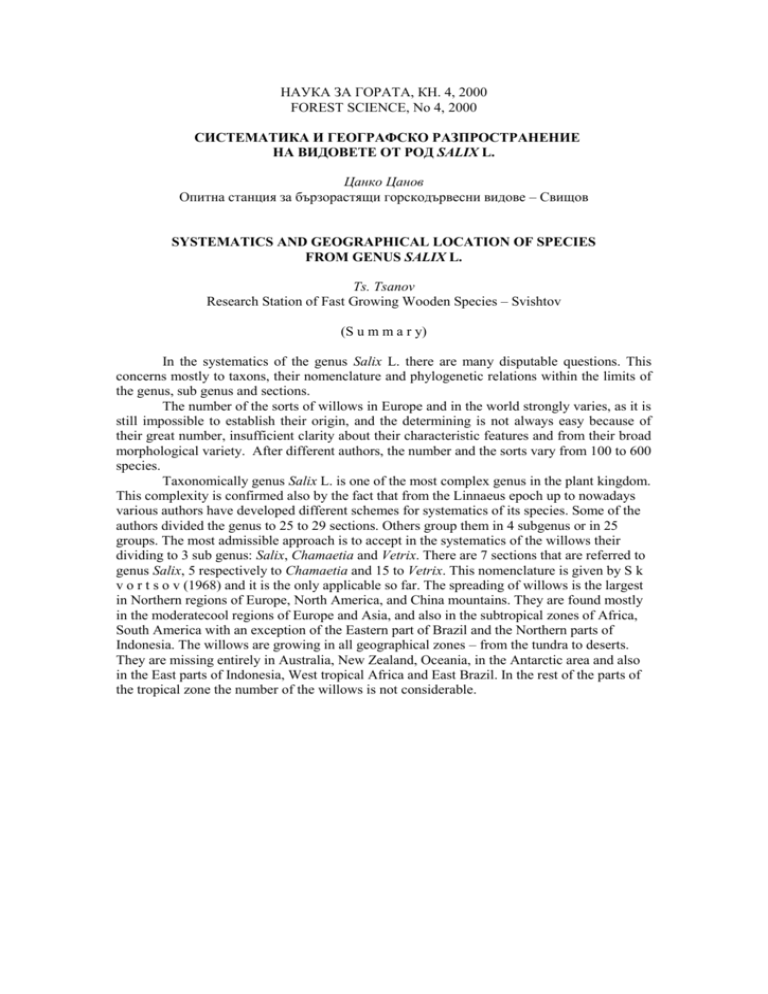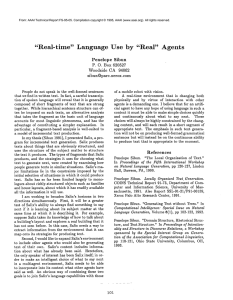НАУКА ЗА ГОРАТА, КН - Forest Science, Sofia
advertisement

НАУКА ЗА ГОРАТА, КН. 4, 2000 FOREST SCIENCE, No 4, 2000 СИСТЕМАТИКА И ГЕОГРАФСКО РАЗПРОСТРАНЕНИЕ НА ВИДОВЕТЕ ОТ РОД SALIX L. Цанко Цанов Опитна станция за бързорастящи горскодървесни видове – Свищов SYSTEMATICS AND GEOGRAPHICAL LOCATION OF SPECIES FROM GENUS SALIX L. Ts. Tsanov Research Station of Fast Growing Wooden Species – Svishtov (S u m m a r y) In the systematics of the genus Salix L. there are many disputable questions. This concerns mostly to taxons, their nomenclature and phylogenetic relations within the limits of the genus, sub genus and sections. The number of the sorts of willows in Europe and in the world strongly varies, as it is still impossible to establish their origin, and the determining is not always easy because of their great number, insufficient clarity about their characteristic features and from their broad morphological variety. After different authors, the number and the sorts vary from 100 to 600 species. Taxonomically genus Salix L. is one of the most complex genus in the plant kingdom. This complexity is confirmed also by the fact that from the Linnaeus epoch up to nowadays various authors have developed different schemes for systematics of its species. Some of the authors divided the genus to 25 to 29 sections. Others group them in 4 subgenus or in 25 groups. The most admissible approach is to accept in the systematics of the willows their dividing to 3 sub genus: Salix, Chamaetia and Vetrix. There are 7 sections that are referred to genus Salix, 5 respectively to Chamaetia and 15 to Vetrix. This nomenclature is given by S k v o r t s o v (1968) and it is the only applicable so far. The spreading of willows is the largest in Northern regions of Europe, North America, and China mountains. They are found mostly in the moderatecool regions of Europe and Asia, and also in the subtropical zones of Africa, South America with an exception of the Eastern part of Brazil and the Northern parts of Indonesia. The willows are growing in all geographical zones – from the tundra to deserts. They are missing entirely in Australia, New Zealand, Oceania, in the Antarctic area and also in the East parts of Indonesia, West tropical Africa and East Brazil. In the rest of the parts of the tropical zone the number of the willows is not considerable.










